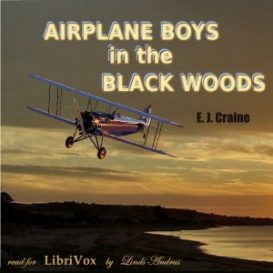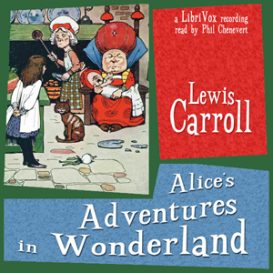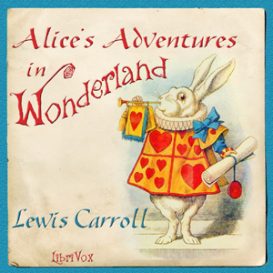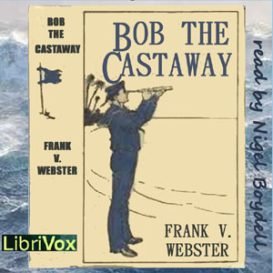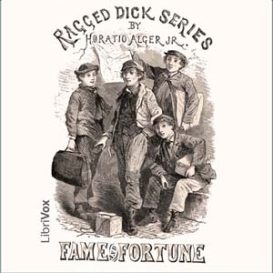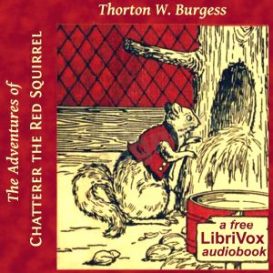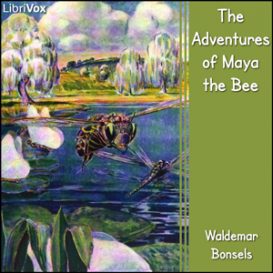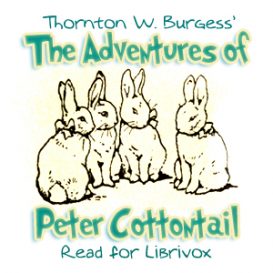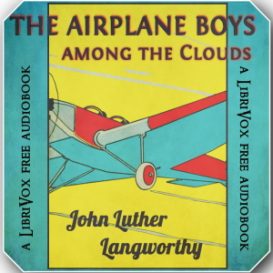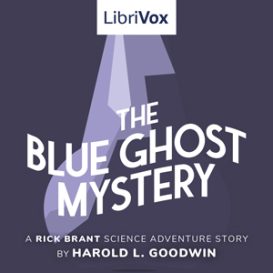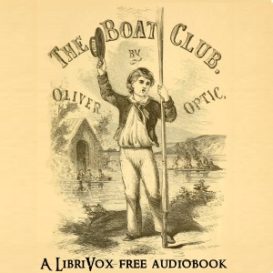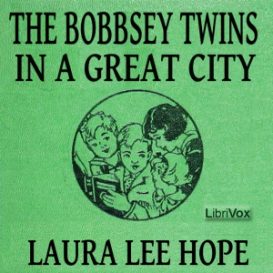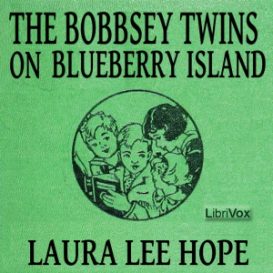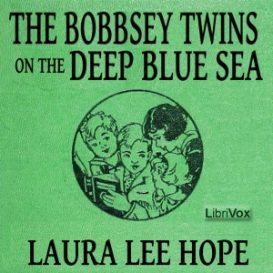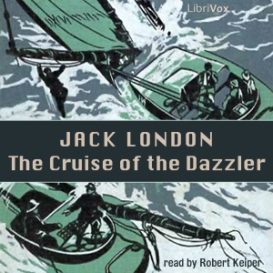Action & Adventure
Showing all 19 results
Adventures of Huckleberry Finn (version 2)
In The Adventures of Huckleberry Finn, Mark Twain creates an entertaining adventure of Middle America in the 1800’s – afloat on a raft on the Mississippi River. Huck escapes his civilized life when he arranges his own “murder” and turns back into the backwoods, downriver yokel he started as, and in the process springing a slave, Jim, from bondage. Huck and Jim experience life as a series of tableaux as the river sweeps them through small towns on their way South. At each stop, Huck engages his talent for mixing fact with bald-faced lies to endlessly get himself out of situations… and of course, putting him into others! Much has been written about the statement Twain is making about slavery in this book, but it’s really secondary to the story. The facts of how black people were treated in this period give Huck and Jim their license for life on the run. Modern listeners will be intrigued by the unencumbered life of the pair; they make do with coffee, fish from the river, and little else (but of course, when they do need something extra, they don’t mind helping themselves to it without recourse to money!) Huck and Jim have run-ins with desperadoes and family feuds and even manage to get run down by a steamboat. The adventures ratchet up when they are joined on the raft by a self-proclaimed “duke” and a “king” – shysters both, who spend their time in figuring how to fleece the public in the little river towns. And when Jim is captured and threatened with being sent back into slavery, Huck enlists his old buddy Tom Sawyer in a frenzied, desperate, and terribly funny rescue. I had to clip a lot of laughing from this recording at Twain’s sly, catch-’em-when-they’re-not-looking humor, but you can feel free to enjoy some good belly laughs at this crew of lovable rapscallions! (Summary by Mark)
Airplane Boys in the Black Woods
?The Airplane Boys accidentally bump into a new mystery which is only solved after many pages of excitement in this seventh book of air adventures.? Excerpt From: E. J. Craine. ?Airplane Boys in the Black Woods.?
Alice in Wonderland (Drama)
A dramatization of Lewis Carroll?s Alice?s Adventures in Wonderland and Through the Looking Glass for the stage. In this version, Alice goes through the looking glass and encounters a variety of strange and wonderful creatures from favorite scenes of Alice’s Adventures in Wonderland the Through the Looking Glass. Including a conversation with the Red and White Queens, encounters with Humpty Dumpty, the Mock Turtle, the Cheshire Cat, and the Caterpillar, and of course everyone’s favorite Mad Tea Party. (Summary by ElleyKat) Stage Directions: Haili Lewis Carroll: Charlotte Brown Alice: Amanda Friday Red Queen: Shauna Kennett White Queen: Elizabeth Klett White Rabbit: ToddHW Humpty Dumpty: nomorejeffs Gryphon: Brett G. Hirsch Mock Turtle: GlassMask Mad Hatter: Elliot Gage March Hare: Charlotte Duckett Dormouse: Kimberly Krause Frog Footman: Larry Wilson Duchess: ElleyKat Cheshire Cat: WoollyBee Tweedle Dee: Charlotte Brown Tweedle Dum: Anastasiia Solokha King of Hearts: GlassMask Queen of Hearts: Eden Rea-Hedrick Knave of Hearts: gloriousjob Caterpillar: Etel Buss Two of Spades: Dave Harrell Five of Spades: Dave Harrell Seven of Spades: Dave Harrell Audio edited by ElleyKat and Kimberly Krause.
Alice’s Adventures in Wonderland (abridged, version 3)
A delightful version of Alice’s Adventures following that scurrying Rabbit with the watch that is shortened for the enjoyment of younger children. She meets all of the strange talking animals (and they are just as rude or silly as usual) and eats and drinks from all of the bottles and grows and shrinks alarmingly just like in the longer version. Enjoy. (Summary by the reader, Phil Chenevert)
Alice’s Adventures in Wonderland (version 2)
Alice’s Adventures in Wonderland tells the story of a girl named Alice who falls down a rabbit hole into a fantasy world populated by peculiar and anthropomorphic creatures. The tale plays with logic in ways that have given the story lasting popularity with adults as well as children. It is considered to be one of the most characteristic examples of the “literary nonsense” genre, and its narrative course and structure have been enormously influential, especially in the fantasy genre. (summary from Wikipedia)
Bob the Castaway
Frank V Webster was a pseudonym controlled by the Stratemeyer Syndicate, the first book packager of books aimed at children. This pseudonym was used on books for boys from the early 1900s through the 1930s. Bob the Castaway follows the antics of young prankster Bob Henderson, his parents futile attempts to get him to mend his ways, and his subsequent nautical adventures. (Introduction by Nigel Boydell)
Bobs, a Girl Detective
This is a great short chapter mystery book for girls. It is similar to Nancy Drew. Bobs is one of the four sisters whose parents die, leaving them with the responsibility of caring for themselves. They have to work together to be cheerful through the hard time and a long the way have many adventures! Let’s start decoding the clues! (Summary by peppersnoodles93)
Fame and Fortune
Richard Hunter, formerly Ragged Dick, continues to advance in the world through luck and excellent morals. He, along with his friend Henry, moves into a better boarding house and then finds a promising job. He is framed for theft by a jealous co-worker and ends up in jail. He is exonerated, given his job back, and then is promoted. He eventually works his way up the ladder and becomes quite successful. (Written by Alys Attewater and Barry Eads)
The Adventures of Chatterer the Red Squirrel (Dramatic Reading)
Author and editor of numerous children’s books, Thornton W. Burgess was also a noted conservationist. In writing for youngsters he combined a gift for storytelling with his love of the outdoors, creating an entertaining menagerie of animals whose adventures he skillfully recounted in a series of charming fables. In them, he taught young readers about nature and encouraged them to love the “lesser folk in fur and feathers.” In this delightfully told tale, Burgess chronicles the escapades of Chatterer the Red Squirrel, who’s known throughout the Green Forest as a mischief maker. Narrowly escaping the clutches of Shadow the Weasel and Redtail the Hawk, the bushy-tailed little fellow decides to leave the forest for a new home, only to learn that curiosity, carelessness, and mistrust can lead to a heap of troubles. First published in 1915, this engaging story will charm readers of all ages ? as well as young listeners. Recorded by students of Houghton College in Houghton, NY Characters: Mercedes Miller: Narrator Joe Miner: Chatterer Hannah Messerschmidt: Reddy, Pussy, Boy, Voices Kaitlyn McKinney: Sammy, Mom, Porky, Tommy Robert Kuchar: Peter, Farmer, Shadow
The Adventures of Maya the Bee
The Adventures of Maya the Bee is an exciting tale for children of all ages. Themes of growth and development of courage and wisdom are found, as well as the extreme joy and satisfaction that Maya experiences in the beauty of creation and all creatures. Her ultimate and innate loyalty to her Nation of Bees is acted out in the final heroic scenes. This story gives us the delightful sense of having seen a small segment of the world through a Bee’s eyes. (Summary by Brenda Price)
The Adventures of Peter Cottontail
This is the story of Peter Rabbit, a mischievous, but cautious, lagomorph who lives in the Green Meadows. Peter Rabbit begins his adventures with a quest for a new name, since his name is far too common for his taste. Having a new name is not quite what he thought it would be, however, and soon he is on to new exploits like outsmarting Reddy Fox and discovering where all his friends spend the winter. This tale co-stars Reddy Fox, Jerry Muskrat, Unc’ Billy Possum, Jimmy Skunk, Ol’ Mistah Buzzard, Bowser the Hound, and many more of Thornton W. Burgess’ delightful characters. Summary by Jill Engle
The Adventures of Pinocchio (version 2)
Do today’s children still learn what a “marionette” is? The beloved story of Pinocchio may represent a last lingering picture of a world not dominated by plastic or electronic toys. Pinocchio is a puppet made from a piece of wood that curiously could talk even before being carved. A wooden-head he starts and a wooden-head he stays – until after years of misadventures caused by his laziness and failure to keep promises he finally learns to care about his family – and then he becomes a real boy. For those who have seen the Disney movie the cast of characters will be familiar, from the Talking Cricket (who acts as his conscience) to Lamp-Wick, his partner in truancy and having heedless fun. Though the toys of today are far from the puppet shows in Carlo Collodi’s book, his themes of being truthful, thoughtful, and dependable will always be timely. (Summary by Mark)
The Airplane Boys among the Clouds
Elephant and Larry arrive at Sunrise Lake, looking for the Bird boys, Frank and Andy, who are trying out a new biplane. Many adventures await these young men in their airplane!
The Blue Ghost Mystery
When the ghost of a Civil War soldier, killed visiting his sweetheart across enemy lines, comes back to haunt the Virginian locals at an old mine, Rick Brant and his ex-marine colleague Scotty decide to investigate. – Summary by John Walker
The Boat Club; or, The Bunkers of Rippleton
The Bunkers are a group of rebellious boys who make life miserable for many on the shores of an upstate New York Lake. Captain Sedley’s son, Frank, has a run in with the boys and decides to start a boat club for his son and his friends.They learn the operation of the boat, cooperation and discipline. In the course of the story, they also show up the Bunkers. – Summary by JohnTRN
The Bobbsey Twins in a Great City
In book 9 of the Bobbsey Twins series, the twins and their family visit New York City. Adventure awaits around every corner as the twins explore the big city. (Summary by Krista Zaleski)
The Bobbsey Twins on Blueberry Island
The Bobbsey twins are off to spend a summer full of fun and adventures on Blueberry Island. They will encounter a cave, and gypsies, and other things I won’t tell you about. You can find out by listening to this book! As with many children’s books written during this time in history, there are racial stereotypes that would not pass muster today. To edit them out would be to erase history, so I’m reading the book, as is. There is a “fat black mammy” named Dinah, and gypsies (of undetermined geographical origin) who naturally steal because they don’t know any better. These stereotypes can act as a good springboard for educating your child on how far we have come, and how far we still need to go, to erase racism altogether. – Summary by Nan Dodge
The Bobbsey Twins on the Deep Blue Sea
This is the 11th in the original series of books about the Bobbseys — two sets of twins in one family, solving mysteries and having adventures. Bert and Nan are 12, Flossie and Freddie are six. There is a father who works, a mother who stays home, a cook, a handyman, and an assortment of animals. – Summary by Nan Dodge
The Cruise of the Dazzler
Young Joe Bronson, caught between poor grades and his father’s threats of military school, runs away from home. He joins the crew of a sloop named the Dazzler, but quickly figures out his captain, Pete Le Maire (nicknamed “French Pete”) frequently engages himself and those at his command in criminal activity. Will Joe be able to escape this unwanted and dangerous new life at sea? Published in 1902, Jack London sold this book (his first full-length novel) as a boy’s adventure novel set in San Francisco, his hometown. In his autobiography, London recalls lifting several more elements in this novel from his adolescence, as in youth he bought a sloop called the Razzle Dazzle from a oyster pirate nicknamed “French Frank.” – Summary by Mary Kay



